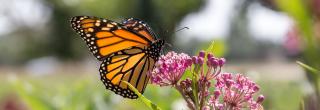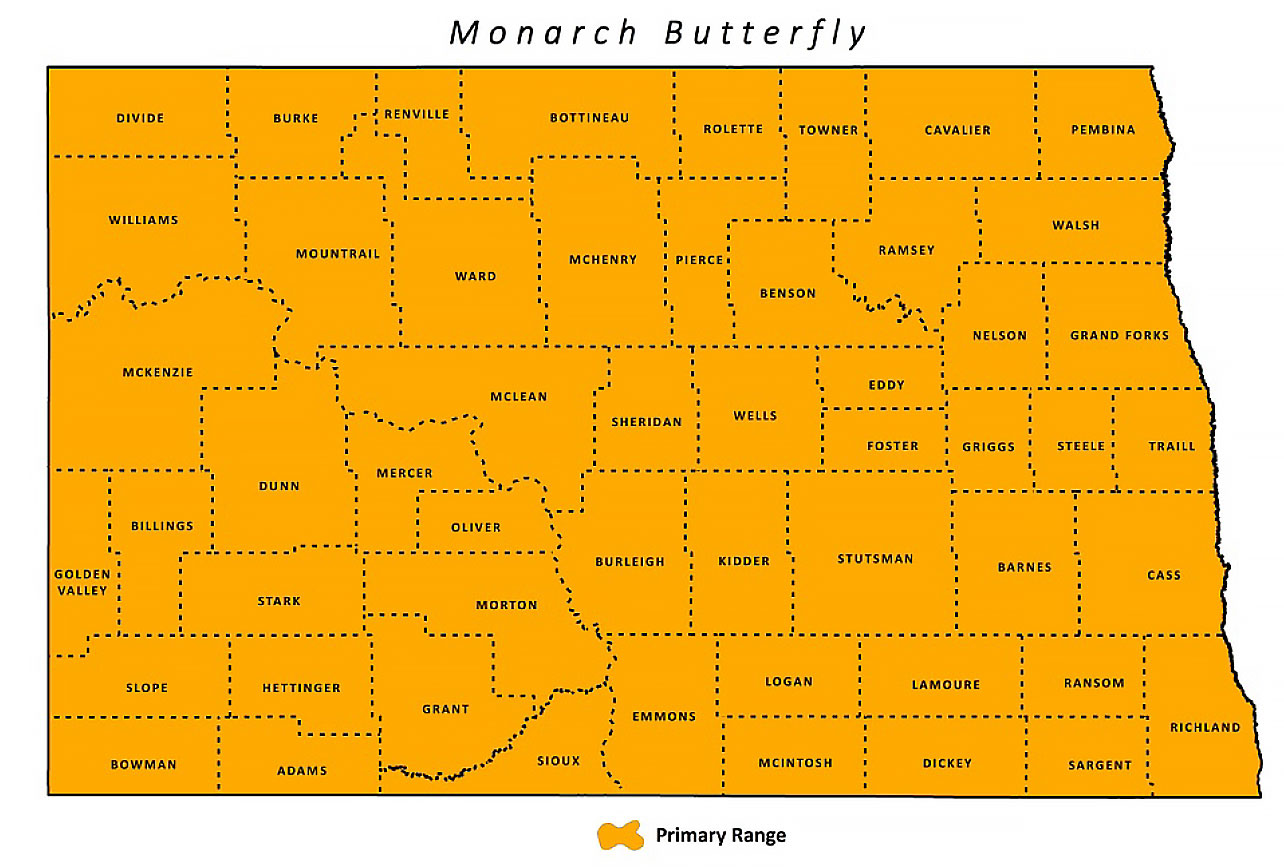
Monarch Butterfly
| Scientific Name | Danaus plexippus |
|---|---|
| General Description | Most recognizable by their orange wings with black and white markings. The outer edge of the wing is black with patterns of white spots. |
| Status | Summer resident, migratory. |
| Abundance | Common. |
| Primary Habitat | Monarchs are found in areas a high number of nectar sources. Native plants are preferred most importantly milkweed. |
| Federal Status | Petitioned for listing in 2014. |
| Reason for Designation | Loss of native prairie habitat containing milkweed. Milkweed is the lone food source for the Monarch caterpillar. |
Locations and Conditions of Key Habitat
Preferred Habitat
Monarchs are typically found in areas with a high number of nectar sources. While domestic plants are used native flowers are preferred. Monarchs in the caterpillar stage rely exclusively on milkweed so areas with high density of milkweed will contain both caterpillars and adult Monarchs.
Key Areas and Conditions for the Monarch Butterfly in North Dakota
Monarchs are found throughout North Dakota. Areas with a higher density of native prairie would be more likely to support Monarchs.
Problems Which May Affect this Species
Habitat
The loss of habitats that contain milkweed is the primary cause for this species decline. Loss of habitat with high quality nectar sources for adults, such as native prairie is also a concern. Connectivity between useable habitats is a concern.
Other Natural or Manmade Factors
The use of herbicide for weed control at certain times of the year in native prairie tracts may be a detriment by reducing nectar sources for the butterfly. Insecticide use near populations may also be a factor.
Research and Survey Efforts
Current Research or Surveys
- No research or survey efforts are underway for this species.
Previous Research or Surveys
- The University of Minnesota has done feeding studies of the Monarch.
- Iowa St. University has looked at the effects of herbicide use on Monarchs.
- Royer surveyed butterflies at a number of sites in North Dakota.
Additional Research or Surveys Needed
- Implementation of a monitoring protocol for this species.
Management Recommendations
- Develop pollinator habitat.
- Protect and manage high quality native prairie.
- Develop connectivity between quality habitat
- Delay haying of habitat until after end of adult flight
- Planting milkweed and native nectar plants to improve habitat
- Avoid broadcast spraying of pesticides and herbicides at known sites to minimize loss of adults and nectar sources.
Monitoring Plans
The North Dakota Game and Fish Department currently does not have a monitoring protocol for this species.
2005-2015 PROGRESS
The Monarch Butterfly was added as a Level I Species of Conservation Priority during the 2015 Wildlife Action Plan revision. The Monarch is currently under consideration for list under the Theatened and Endangered Species Act.

Note: A listing of works consulted when compiling the information on this page may be found in the 2015 State Wildlife Action Plan.
